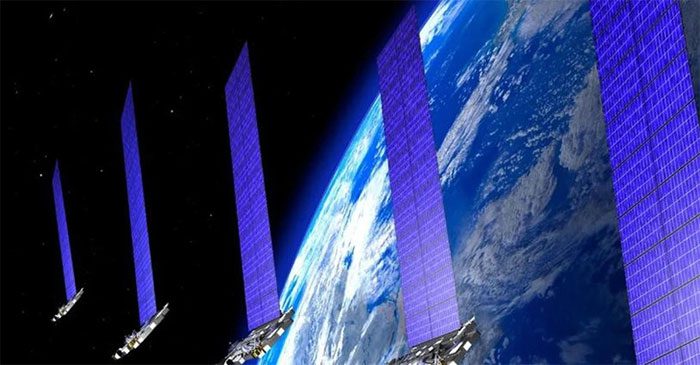According to new research, the electronic devices on SpaceX’s Starlink satellites are “leaking” low-frequency radiation, which could impact astronomy.
Engineer Federico Di Vruno from the SKA Observatory in Australia, South Africa, and the International Astronomical Union stated that this study is the latest effort to better understand the radiation effects of satellite constellations on astronomical observatories.
Currently, the radio frequencies between 10.7 and 12.7 gigahertz are used by satellites for communication down to Earth.

Illustration of electromagnetic radiation from Starlink satellites – (Photo: SHUTTERSTOCK).
However, scientists believe that the satellites may be emitting unwanted radio waves outside that frequency range. This is what Mr. Di Vruno and his colleagues sought to investigate.
They utilized the Low-Frequency Array (LOFAR) in Europe, a network comprising approximately 20,000 radio antennas distributed across 52 locations. With this sensitivity, they observed 68 Starlink satellites and detected the phenomenon of electromagnetic radiation leakage.
Astronomer Cees Bassa from ASTRON, the Netherlands Institute for Radio Astronomy, stated: “With LOFAR, we detected radiation with frequencies from 110 to 188 MHz from 47 of the 68 observed satellites.
This frequency range includes a band between 150.05 and 153 MHz that has been specifically allocated by the International Telecommunication Union for the radio astronomy sector.
On Earth, the International Electrotechnical Commission sets strict regulations for electronic devices to control electromagnetic interference, but those rules do not apply in space.
The researchers have contacted SpaceX. The company is seeking ways to mitigate or eliminate this unintentional leakage.
Astronomer Michael Kramer from the Max Planck Institute for Radio Astronomy and the Astronomische Gesellschaft in Germany remarked: “This research shows how current technological development can have unforeseen side effects on astronomy.”
The study has been published in the journal Astronomy & Astrophysics.
|
“Forest” of satellites in orbit Currently, it is estimated that there are about 4,365 small Internet satellites from SpaceX in low Earth orbit, along with thousands of other satellites planned for launch. And SpaceX is not the only company. OneWeb has over 600 satellites, while Amazon plans to launch thousands more starting in 2024. Previously, SpaceX has received feedback regarding visible light pollution and has designed newer satellites to be less reflective. |


















































